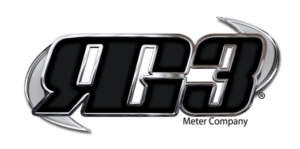[vc_row][vc_column width=”1/4″][vc_column_text]
Specifications
-
2″ – 10″ – Turbine Meter Specifications
-
Turbine Meter Accuracy Curves
-
Turbine Meter Head Loss Curves
[/vc_column_text][vc_separator color=”white”][vc_column_text]
Warranty Specifications
[/vc_column_text][/vc_column][vc_column width=”3/4″][vc_row_inner][vc_column_inner width=”1/4″][vc_single_image image=”3809″][/vc_column_inner][vc_column_inner width=”1/4″][vc_single_image image=”3808″][/vc_column_inner][vc_column_inner width=”1/4″][vc_single_image image=”3810″][/vc_column_inner][vc_column_inner width=”1/4″][vc_single_image image=”3811″][/vc_column_inner][/vc_row_inner][vc_separator color=”white”][vc_column_text]Turbine Meters incorporate a wheel or turbine that faces the flow in its axial direction. The flow-rate determines the rotational speed of the turbine. Turbine Meter technology has been widely used since the mid 1800s and is often found in larger meters. RG3 Turbine Meters are horizontal vane meters and are available in sizes from 2 inch to 10 inch.
Turbine Meters can be installed in virtually any position as long as the totalizer is not placed upside down. Cavitation can present a significant error curve, so RG3 Meter Company recommends 10 pipe diameters of straight pipe upstream of the meter and 5 pipe diameters of straight pipe downstream. It is highly recommended that a Z-plate strainer be used to protect the turbine and help reduce the effects of turbulence. Installing a separate flow-straightening device upstream ensures the highest possible accuracy.
Turbine Meters tolerate difficult working conditions well including a significant presence of suspended solids, and are used were occasional low and moderate to high sustained flow are needed. As they age or usage becomes excessive, Turbine Meters can be rebuilt in place with minimal difficulty. The metering module can be replaced without affecting the metering accuracy and without removing the housing. [/vc_column_text][/vc_column][/vc_row]
